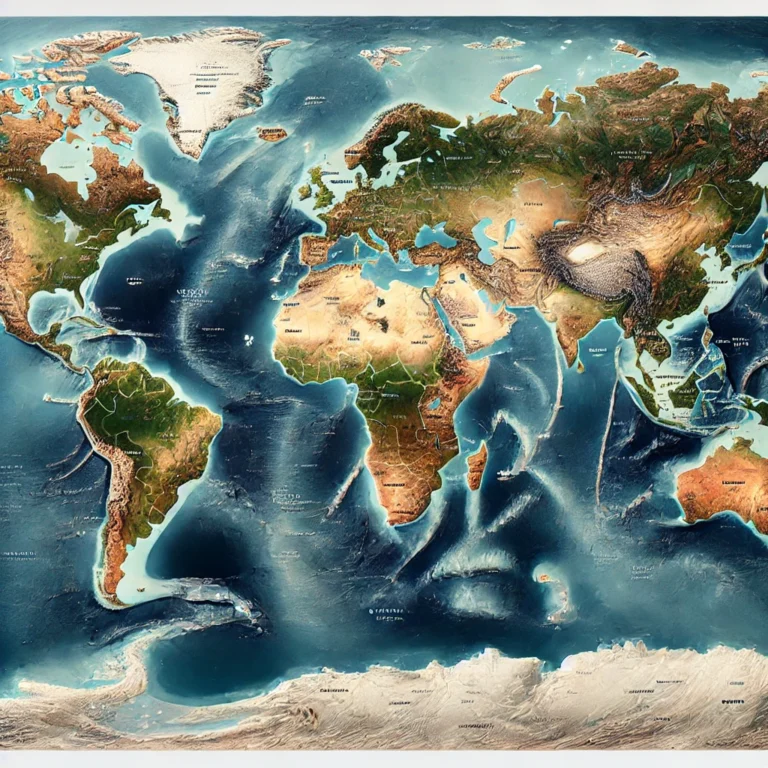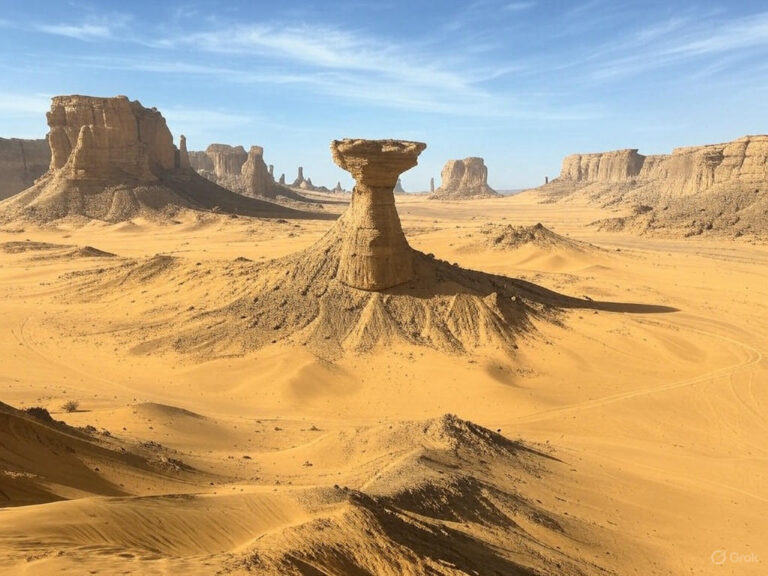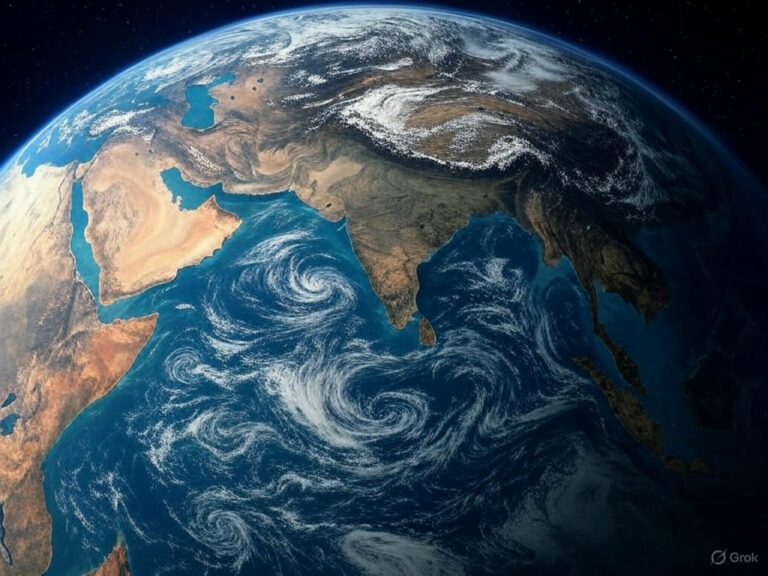Temperature Distribution on Earth
Imagine standing at the equator, feeling the intense heat of the midday sun. Now, shift your imagination to the poles, where the same sun appears weak and distant. This contrast in heat is not just a matter of location but a fundamental force shaping our planet’s climate. Let’s understand why different parts of the Earth experience different temperatures and how this affects everything from winds to rainfall.
The Sun: The Ultimate Heat Source
The Sun is the master architect of Earth’s climate. Every gust of wind, every drop of rain, and even the mighty storms owe their existence to the way the Earth receives heat from the Sun. But here’s an interesting fact: Earth intercepts only one in two billion parts of the Sun’s total radiation! This tiny fraction, however, is enough to power life and drive all climatic phenomena.
This incoming solar radiation is called Insolation—the amount of solar energy received by the Earth. While Earth does have some internal heat from its molten core, its contribution to surface temperature is negligible compared to the Sun’s radiation.
How the Sun’s Energy Reaches and Leaves Earth
The Sun sends energy to Earth primarily in the form of shortwave radiation, including visible light and ultraviolet radiation. This high-energy radiation heats the Earth’s surface during the day. But Earth doesn’t keep this heat forever. Like a hot pan left on the kitchen counter, it cools down by releasing heat back into space. However, Earth emits this heat as longwave radiation, mostly in the form of infrared radiation—a lower-energy form of heat.
🔹 Analogy: Imagine the Sun as a bonfire and the Earth as a metal plate placed near it. The plate absorbs the bonfire’s heat (shortwave radiation) and becomes warm. But once the bonfire is extinguished, the plate doesn’t stay hot forever—it slowly releases heat back into the surroundings (longwave radiation).
This balance of incoming and outgoing radiation is crucial in determining the temperature of different regions.
How Heat Moves Across Earth
The heat from the Sun does not stay in one place. It travels across the atmosphere and oceans through three main processes:
- Conduction: Direct transfer of heat through materials. Think of a metal spoon heating up when placed in hot tea. However, air is a poor conductor, so conduction plays a minor role in atmospheric heating.
- Convection: Heat transfer through movement of air or water. Warm air rises and cooler air sinks, creating convection currents. This is the primary way heat is distributed in the atmosphere and oceans.
- Radiation: Heat transfer through electromagnetic waves without needing a medium. This is how the Sun heats the Earth, and how the Earth loses heat to space.
Temperature Variations: Understanding Ranges
Temperature doesn’t remain constant. It fluctuates due to time of day, season, and location. These variations are measured as:
- Diurnal Range of Temperature: The difference between the highest and lowest temperature within a single day. Deserts, for example, experience extreme diurnal variations—scorching hot during the day but freezing at night.
- Annual Range of Temperature: The difference between the highest and lowest temperature in a year. Continental interiors experience a larger annual range than coastal regions due to the moderating effect of oceans.
🔹 Real-World Example: Consider New Delhi and Mumbai. Delhi experiences extreme summers and winters, showing a high annual range of temperature. In contrast, Mumbai, surrounded by the Arabian Sea, has a smaller temperature variation due to the ocean’s moderating influence.
Why is This Important?
Understanding temperature distribution is key to grasping global climate patterns. It influences:
✅ Wind Systems: Hot air rises, cold air sinks—this creates wind patterns like monsoons and trade winds.
✅ Pressure Systems: High and low-pressure zones are formed due to temperature variations, shaping weather patterns.
✅ Precipitation: Warm air holds more moisture; its movement influences rainfall patterns worldwide.
In short, temperature isn’t just about how hot or cold a place is—it’s the driving force behind Earth’s entire climate system! 🌍🔥
Factors Affecting Temperature Distribution
Imagine Earth as a giant heating system where different regions receive varying amounts of warmth based on several factors. From towering mountains to vast oceans, from bustling cities to isolated deserts—temperature is influenced by multiple elements that interact dynamically. Let’s understand what shapes the temperature of different places across the globe.
1. Latitude
The closer a place is to the equator, the more direct sunlight it receives. As we move toward the poles, sunlight becomes more slanted, spreading over a larger area and losing intensity. This is why tropical regions remain warm while polar regions stay cold.
However, please note that highest temperatures are not recorded at the equator, but rather around the subtropical regions (~30°N & 30°S).
- This is because the equator experiences high cloud cover and intense rainfall, which reduces surface heating due to energy loss from evaporation and convection.
- In contrast, subtropical regions are drier and receive more direct insolation, leading to higher temperatures.

2. Duration of Sunshine
Temperature depends on how long a place receives sunlight. Factors such as day vs. night, seasonal variations, and cloud cover play a crucial role.
- Longer days in summer mean more heat absorption, leading to warmer temperatures.
- Shorter winter days mean less heating, causing cold conditions.
- A cloudy sky blocks sunlight, reducing temperature, while a clear sky allows maximum heating.
🔹 Example: In summer, places near the Arctic Circle experience continuous daylight for months (Midnight Sun), leading to milder temperatures despite being far from the equator.
3. Transparency of the Atmosphere
The Earth’s atmosphere isn’t completely transparent—it contains gases, dust, and moisture that affect the way sunlight reaches the surface.
- Scattering: If solar radiation encounters a gas molecule smaller than its wavelength, it gets scattered (Rayleigh Scattering). This makes the sky appear blue.
- Reflection: If radiation hits a larger particle like dust, it gets completely reflected.
- Absorption: Some gases, like ozone, carbon dioxide, and water vapor, absorb solar radiation, reducing the heat reaching Earth.
🔹 Example: During smoggy days in Delhi, dust and pollutants reflect and scatter sunlight, reducing daytime temperature.

4. Land and Sea Differential
Land and water heat up differently, influencing regional climates.
- Albedo Effect: Snow-covered surfaces reflect up to 90% of sunlight, keeping polar regions cold.
- Specific Heat: Water takes longer to heat up and cool down compared to land, meaning coastal areas experience milder temperature variations than inland areas.
I believe you must be remembering the meaning of specific heat which is nothing but the amount of heat required for a one-unit mass of substance to increase its temperature by one unit. The specific heat of water is 2.5 times higher than landmass, therefore water takes longer to get heated up and to cool down.
🔹 Example: Mumbai (coastal city) has a stable climate with minor temperature variations, while Delhi (inland city) experiences extreme summers and winters.
5. Winds
Winds move heat from one place to another, balancing temperature differences.
- Onshore Winds: Winds blowing from the sea moderate coastal temperatures by preventing extremes.
- Offshore Winds: Winds blowing from land towards the sea cause rapid cooling at night.
- Local Winds: Special winds impact regional temperatures significantly.
- Loo (India) and Sirocco (North Africa) bring extreme heat.
- Mistral (France) and Bora (Adriatic Sea) cause sharp temperature drops.
🔹 Example: Rajasthan’s summer heat intensifies due to hot Loo winds, while the cold Bora wind causes sudden temperature drops in the Balkans

6. Slope and Aspect: The Role of Topography
The direction and angle of a slope determine how much sunlight it receives.
- South-facing slopes (in the Northern Hemisphere) receive more direct sunlight and are warmer than north-facing slopes.
- In mountainous regions, valleys often trap cold air, making them cooler than surrounding peaks.
🔹 Example: In the Himalayas, south-facing slopes (towards India) are warmer than north-facing slopes (towards Tibet).
7. Nature of the Ground Surface
- Darker surfaces absorb more heat (low albedo), while lighter surfaces reflect more heat (high albedo).
- Urban areas, with concrete and asphalt, absorb more heat, leading to higher temperatures (urban heat island effect).
🔹 Example: A tar road heats up more than a grassy field under the same sunlight.
8. Altitude: The Elevation Effect
As we go higher, temperature drops. This happens because:
- Air pressure decreases, reducing heat retention.
- Fewer greenhouse gases are present to trap heat.
🔹 Example: Shimla is cooler than Delhi despite being at a lower latitude because of its higher altitude.
9. Ocean Currents
Oceans transport heat across the globe through currents.
- Warm Currents carry heat from the equator towards the poles, raising temperatures along their path.
- Cold Currents bring cool water from polar regions towards the equator, lowering temperatures.
- Isotherm Patterns: Isotherms (lines connecting places of equal temperature) bend away from the equator over warm currents and toward the equator over cold currents.
🔹 Example: The Gulf Stream (warm current) keeps Western Europe’s climate mild, while the Labrador Current (cold current) chills eastern Canada.

Conclusion
No single factor controls Earth’s temperature—each interacts with the others, creating diverse climates across the world. From the sun’s position to ocean currents, from mountain heights to local winds, each element plays a role in shaping the temperature distribution we experience daily. 🌍🌡️






